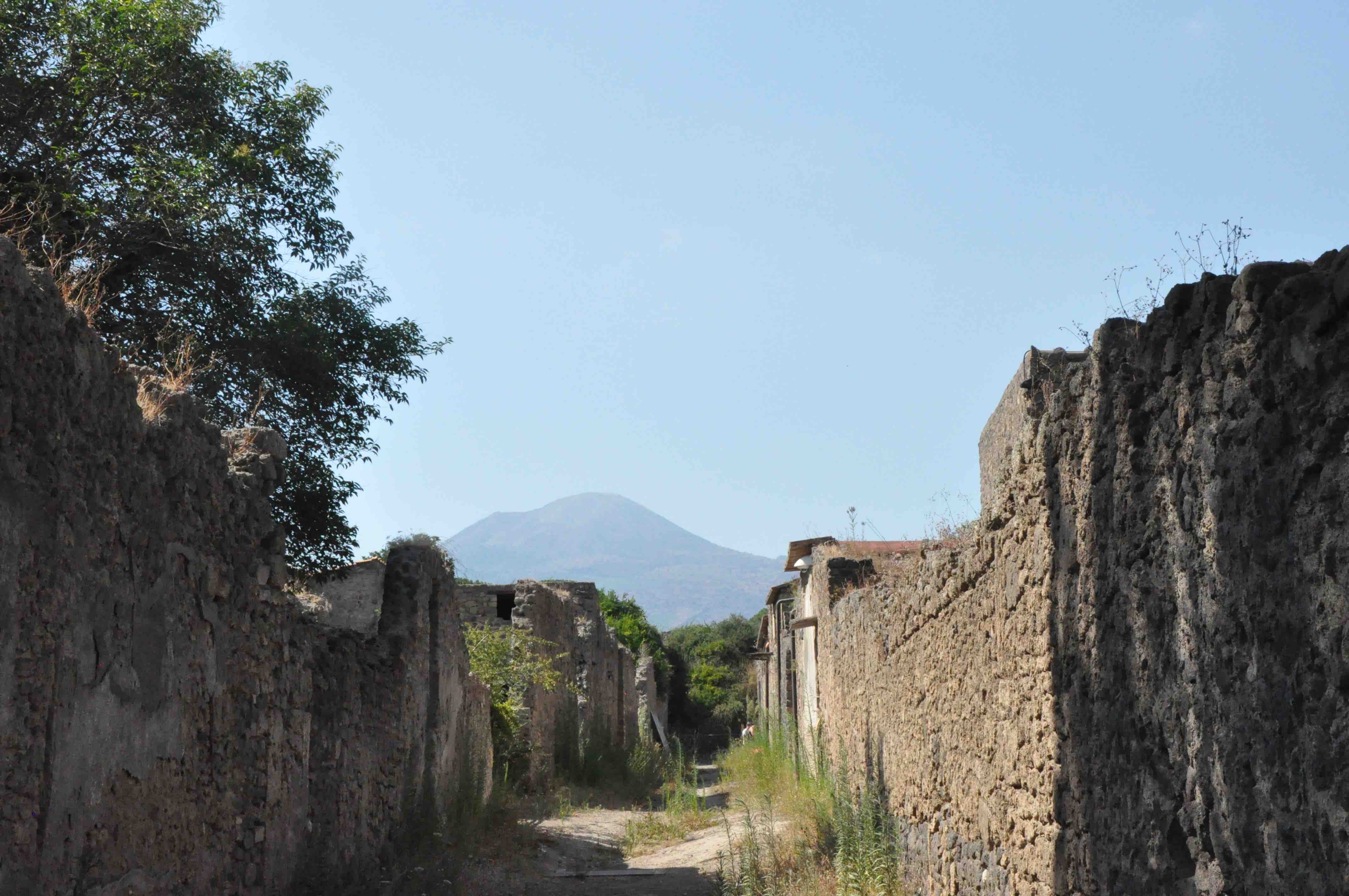
This summer I was lucky to have the opportunity to visit the ancient ruins of Pompeii, a place I have wanted to visit since I worked in the decorative arts field years ago. Given my training in Feng Shui, of course I could not help but to look at this amazing ancient city through my Feng Shui eyes. Observing the external land forms, internal architectural forms and orientation told me things about this city that can’t be found on wikipedia.
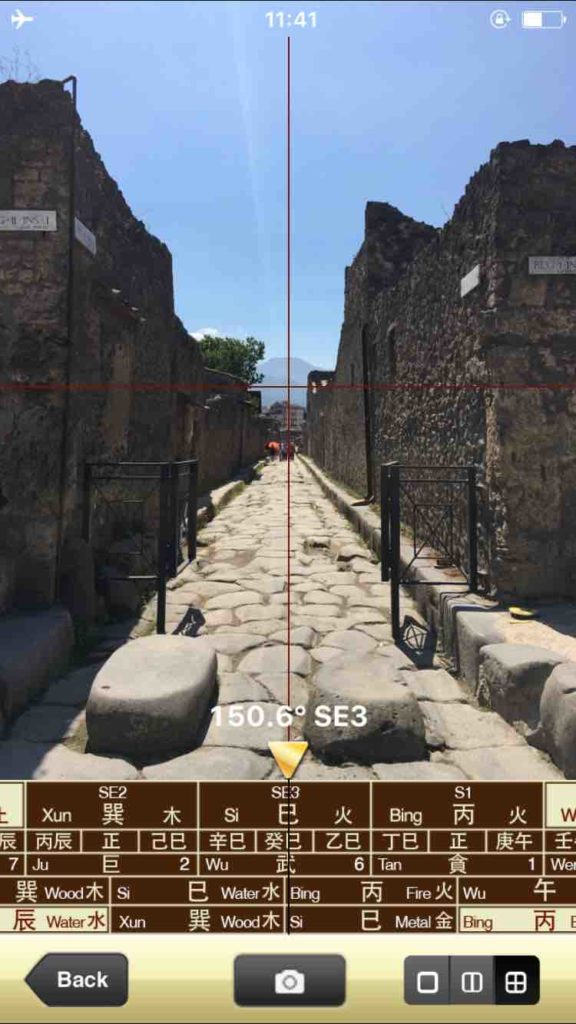
Pompeii was at the height of its prosperity when it was destroyed and buried by a devastating volcanic eruption of Mount Vesuvius on 24 August 79 AD. Historians say that the wealth and prosperity of this ancient city was a result of agricultural abundance in the surrounding area. However, my Feng Shui eyes could see that the prosperity of the Pompeii was not just a result of the rich soil in this region, but also because of the mountains that surround it. The city of Pompeii is located within an almost semi-circular ring of mountains that opens upon the bay of Naples. Within this larger ring there are also smaller ridges of mountains inside creating what we call multiple layers of “embrace”. It is as though the landforms are hugging or embracing the Qi and holding it in place. This is generally a very desirable formation as it allows the Qi to be protected, and to collect and concentrate there.
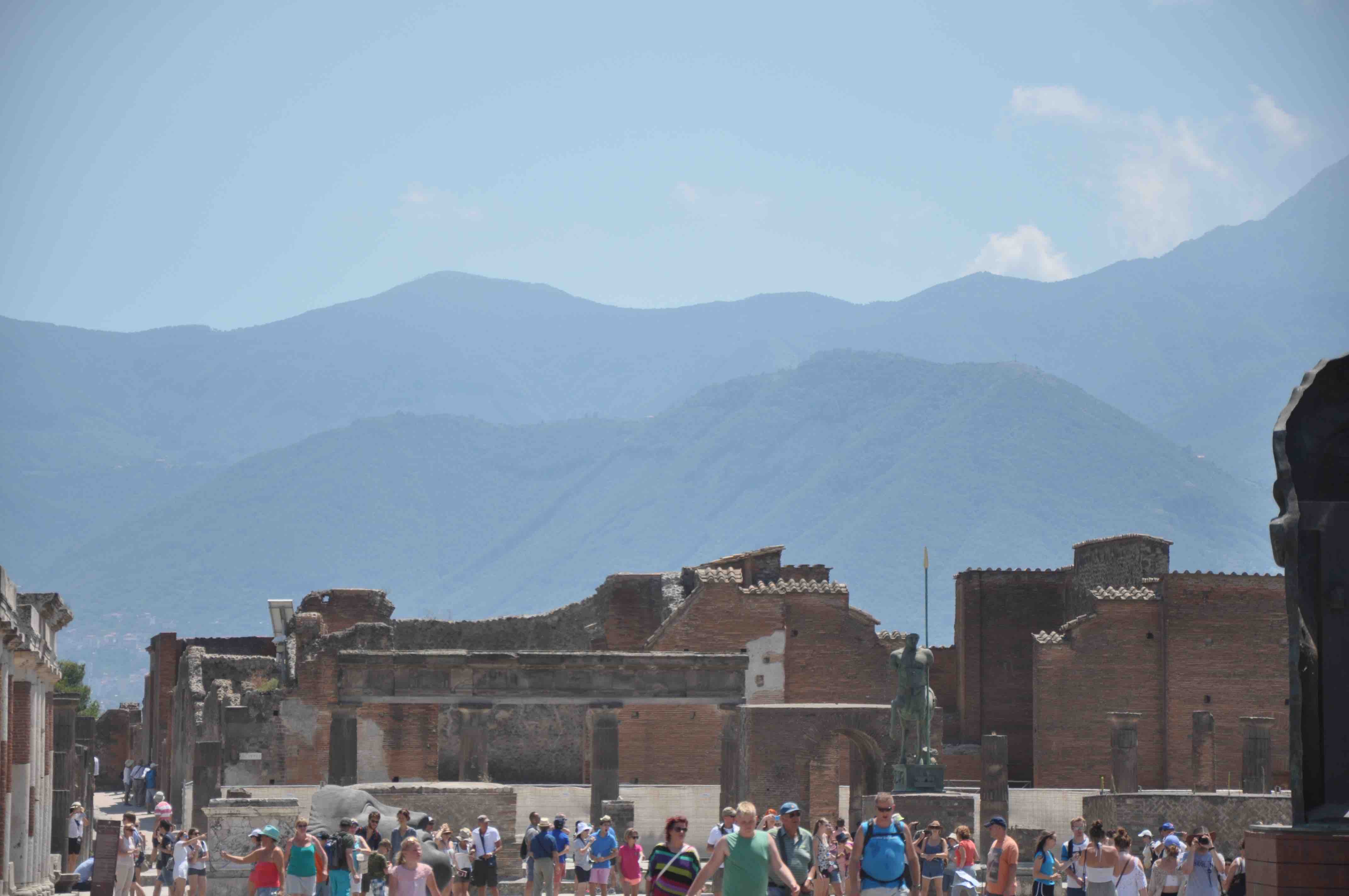
Observing the shapes of the mountains can tell us what kind of activities and industries will benefit from the surrounding landforms and this can be seen in Pompeii as well. Many of the larger homes are facing and receiving the Qi from a prominent flat-topped Earth element mountain that we call Ju Men which means Great Door/Gate. This “Great Door” or “Huge Door” formation is one that brings wealth and financial success and is always a positive feature to see during a Feng Shui audit!
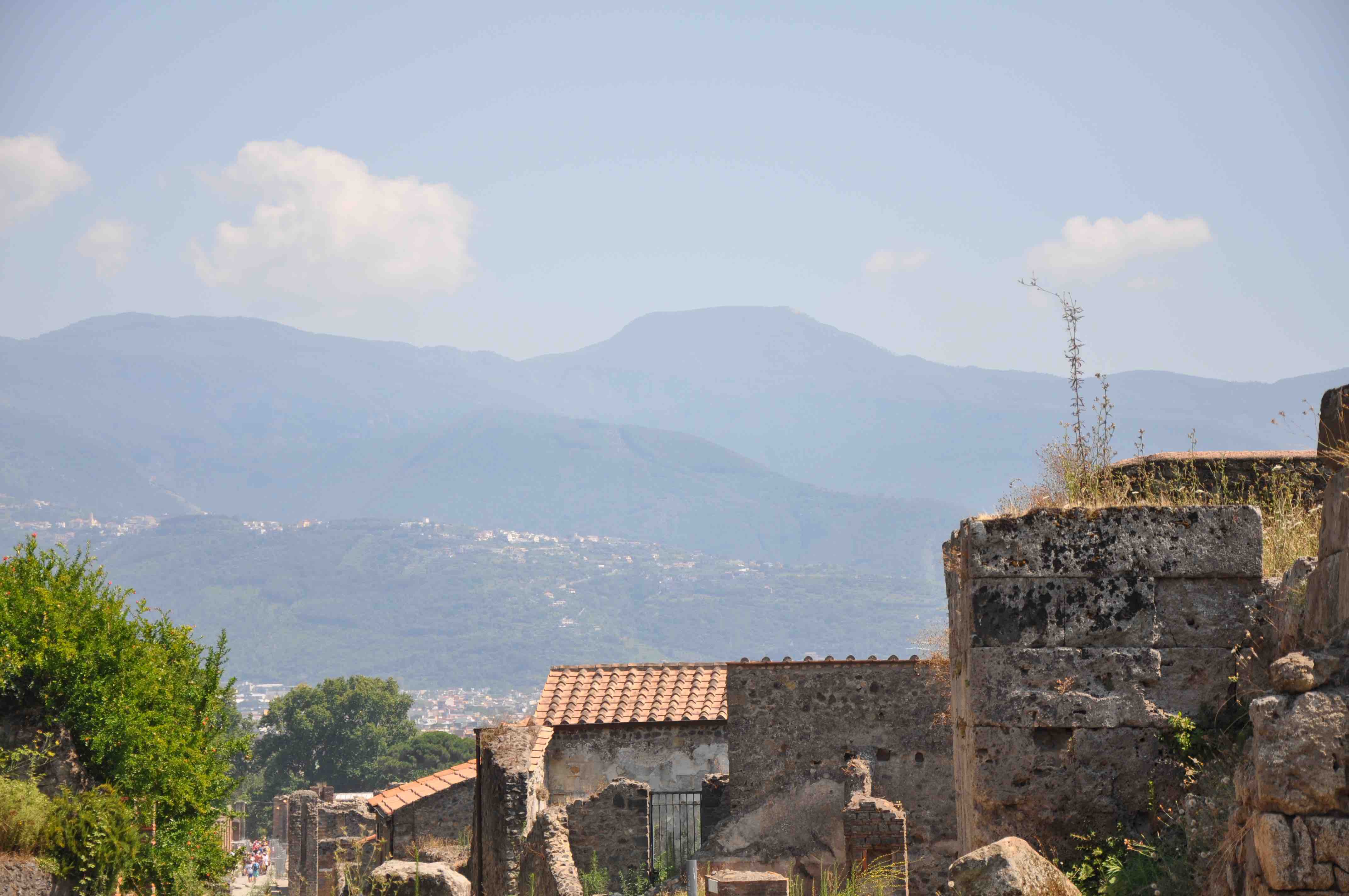
The most prominent mountain visible in Pompeii and the entire Naples area is Mount Vesuvius itself. The shape of Mount Vesuvius today is quite different from what it would have looked in the year 79 AD before the eruption. Pliny the Younger in his account of the catastrophic event says that the mountain literally blew its top. Before the eruption, Vesuvius like many other volcanoes around the world, would have been more conical in shape which in terms of Feng Shui landforms would be considered a Tan Lang or “Greedy Wolf” mountain. A “Greedy Wolf” mountain supports merchants, trade and commerce and no doubt the influence of this mountain shaped the economy and gave rise to the prosperity in Pompeii.

In addition to the highly favorable landforms, the architectural layout of most of the houses in Pompeii incorporate features that are considered ideal in Feng Shui. The first Feng Shui feature that is common, and very pronounced, in the houses of Pompeii is in a large “Internal Bright Hall”, which is like a large foyer just inside the main door which allows the Qi to here collect before circulating to the other rooms. The Internal Bright Hall typical of many houses in Pompeii was also literally brightened by a hole in the roof allowing sunlight to enter as well as rain water which was collected in decorative water features below.
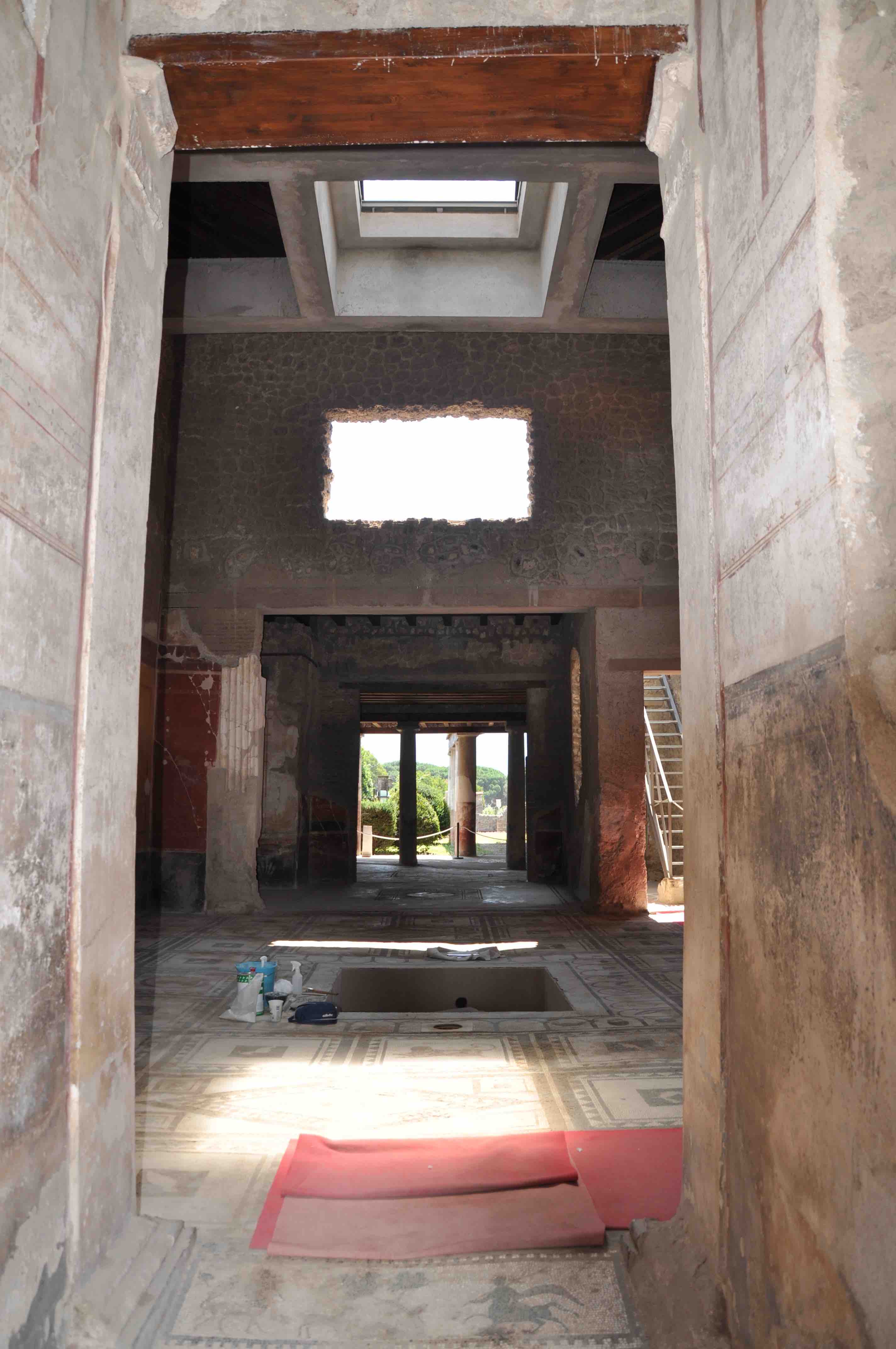
The second feature common feature of Pompeiian homes, that is also an ideal characteristic in Feng Shui, is a central courtyard. A central courtyard is a highly desirable feature in Feng Shui because it allows the central “palace” of the home to be open to receive Qi from both Heaven and Earth. The typical Pompeiian central courtyard contained a beautiful garden and was surrounded on all sides by a series of rooms allowing the Qi to circulated between rooms and for cool breezes to circulate into the rooms from the outside as well. If one sought to build a home with “perfect” Feng Shui it would look very similar in layout to the houses in Pompeii. This excellent internal Feng Shui was surely a bolster to the prosperity of those living there.
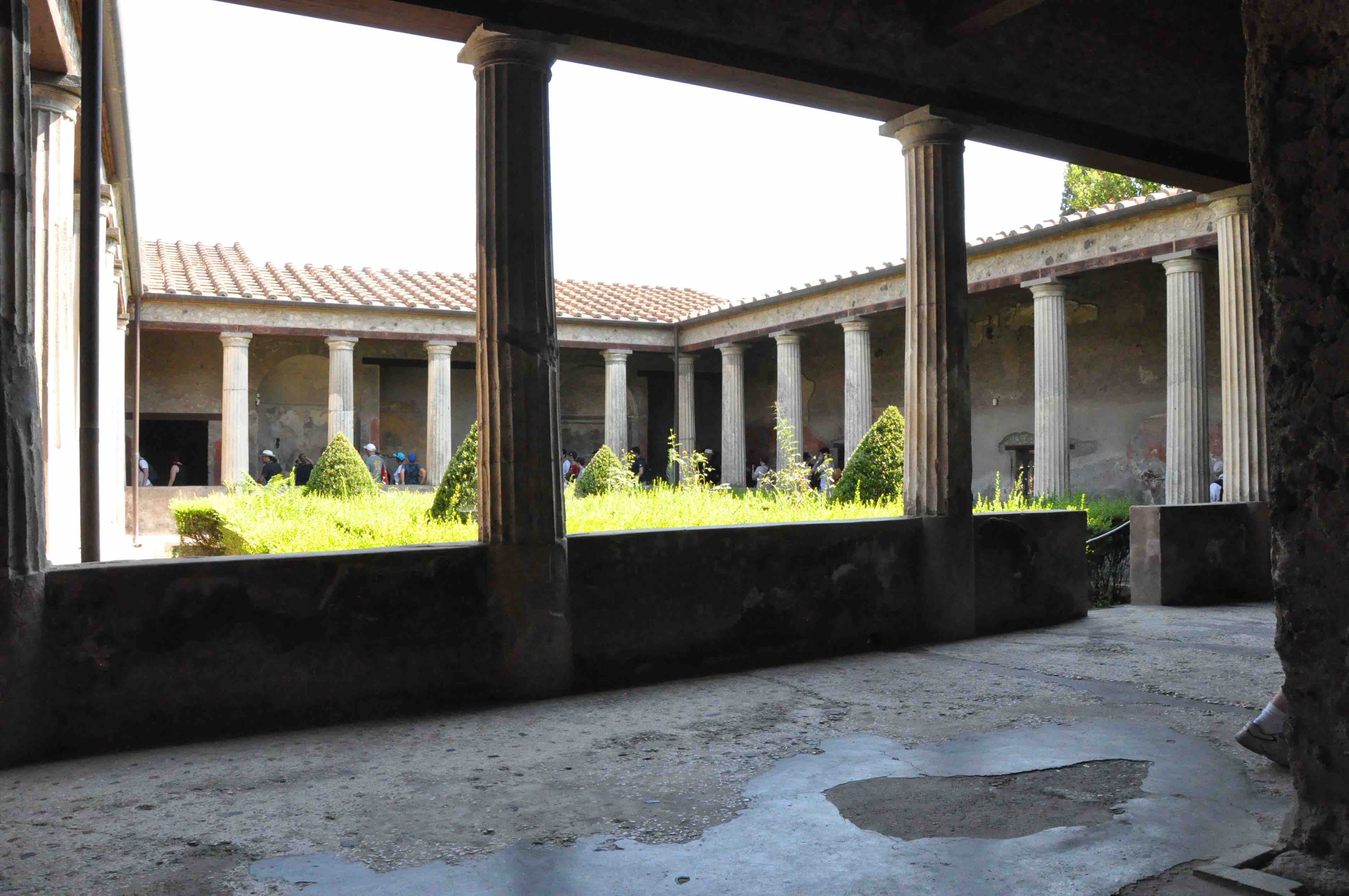
So, with all of the good Feng Shui in Pompeii it begs the question: Why was it destroyed?
Feng Shui is a lot like real estate, it all comes down to location, location, location. Today the city of Naples which is adjacent to the ancient city of Pompeii, is Italy’s 3rd largest city and has the 4th largest economy. Clearly, this location still benefits from the prosperous Qi of the surrounding landforms. However, Mount Vesuvius is still an active volcano and overdue for another eruption. I believe that people will always be attracted to an area with prosperous Qi even if it is unstable – take Los Angeles and San Francisco for example which are both due for a major earthquake. People believe that the benefits of living there outweigh the risks, and hopefully those who risk it have good insurance.
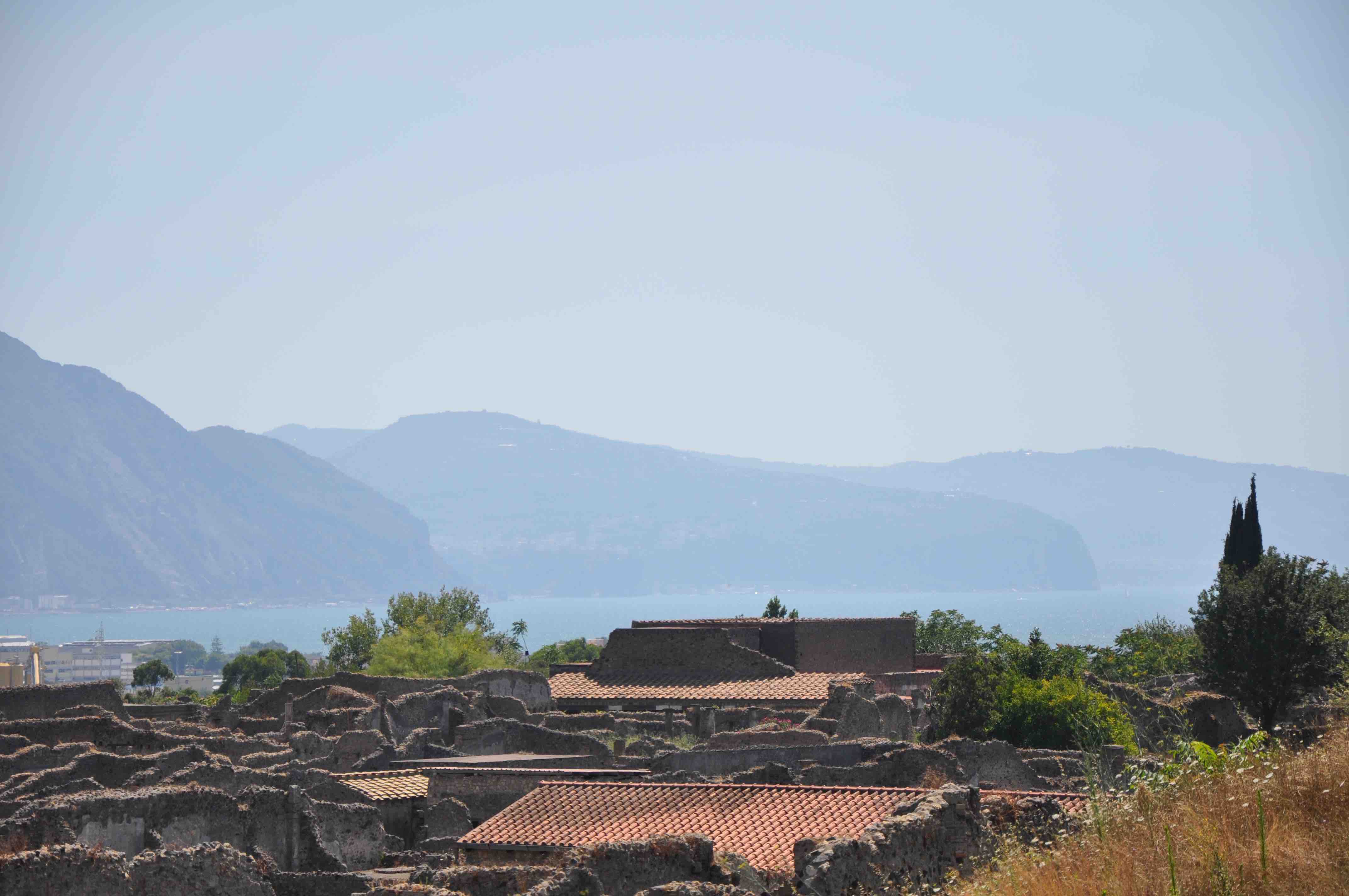
As for why it erupted when it did we can also look to the Chinese calendar for some clues. The date of the eruption occurred on August 24, in the year 79 AD at roughly 1pm. Because of the changes to the Western calendar by popes over the millennium however, it is difficult to be 100% certain of the date on the Chinese calendar. The eruption is estimated to have occurred in an Earth Rabbit year, in the Water Monkey month on a Metal Rooster day and at the hour of the Wood Goat. What this means in short, is that it likely happened on a Year Breaker day which is quite inauspicious. What is striking is the similarity to the Italian earthquake that happened last month which was also on a year breaker day in a Monkey month. It is clear that the shifting plates responsible for the destruction of Pompeii are still active today, but hopefully today’s technology will prevent another tragedy and we can learn from the Pompeii in more ways than one.
